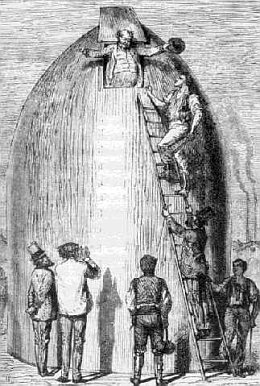
Jules Verne earned his title as the father of science fiction: His 1865 novel From the Earth to the Moon contains eerie similarities to the Apollo program that unfolded a century later.
Like Apollo 11, Verne’s story involved a crew of three being launched from the United States on a trip around the moon. The two spacecraft were of similar dimensions and weight, and both were mostly aluminum. (Verne’s craft was shot from a cannon called the Columbiad; Apollo 11’s command module was called Columbia.) Both were launched from the Florida peninsula after a competition with Texas; Congress resolved a similar contest in the 1960s, choosing Houston as home of Mission Control and Florida as the launch site — indeed, Verne’s craft takes off only 136 miles from today’s Kennedy Space Center. Both crews experienced weightlessness and used retrorockets, both missions were monitored by ground crews using telescopes, and both craft splashed down in the Pacific and were recovered by the Navy.
Some of this was guesswork, but some involved careful thought and intelligent speculation. Verne recognized that a vehicle can be launched into space most easily from low latitudes, and he undertook his own engineering analysis to design the projectile and the cannon that fired it. In his other novels, Verne describes antecedents of helicopters, air conditioning, projectors, automobiles, jukeboxes, the Internet, television, and submarines. “What one man can imagine,” he wrote, “another can do.”
